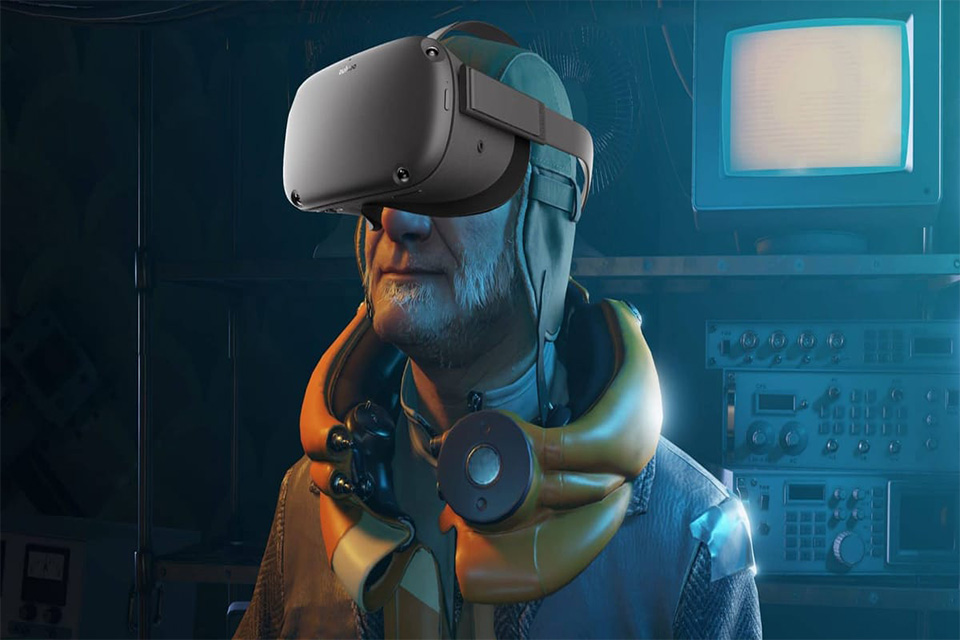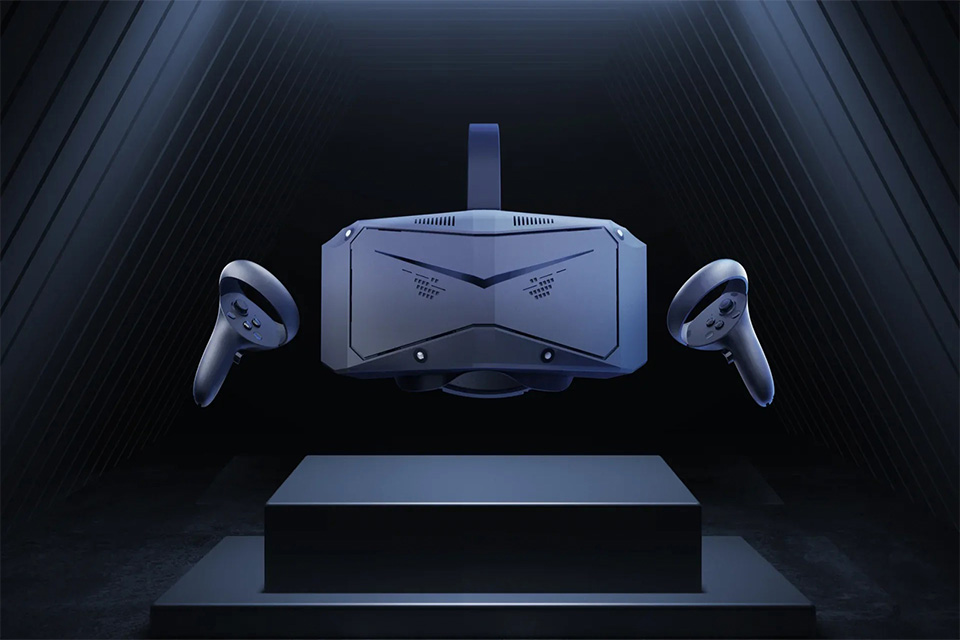The world of virtual reality is constantly evolving, and with it, the quest for the most immersive and visually stunning experience. This article delves deep into the realm of 4K VR headsets, focusing particularly on the Pimax 4K, a pioneer in high-resolution virtual reality. We'll explore the features, challenges, and alternatives in this exciting space, helping you understand what truly makes a VR headset exceptional in 2024. Whether you're a seasoned gamer, a film enthusiast, or simply curious about the future of immersive technology, this deep dive into 4K VR is worth your time. We'll uncover what makes the Pimax 4K unique, discuss its pros and cons, and compare it to other noteworthy headsets. You'll also learn the key elements to consider when choosing the best VR headset to match your needs and budget.
The term “4K” is often associated with high-resolution televisions and monitors, but what does it mean when applied to a VR headset? A 4K VR headset, at its core, is one that offers a display with approximately 4000 pixels horizontally. This translates to a significantly sharper and more detailed image than lower-resolution headsets. The reason this matters so much is that the immersive experience of virtual reality is heavily reliant on the quality of the display; a clearer picture reduces the visibility of individual pixels and the dreaded screen door effect (SDE), which in turn increases the feeling of presence within the virtual environment. A higher resolution per eye gives the user a crisper picture, making the virtual reality feel more realistic and less like looking through a screen. Using a headset with a 4k display means the user sees the virtual objects in greater detail.
The impact of a 4K display in a VR headset cannot be overstated. The improved image clarity allows for more comfortable and prolonged use of the headset, as eye strain is reduced. For gamers, this means seeing more intricate details in vr game environments. For users watching 4k movies or vr video, it offers a more cinematic and engaging viewing experience. The overall goal of a 4K vr headset is to deliver an immersive experience that blurs the line between the real and the virtual world, and the higher resolution is a major contributor to that. When exploring the possibilities, remember that headset's display's quality is what separates great virtual reality experience from okay experience.

The Pimax 4K VR Headset was among the early entrants into the world of high-resolution virtual reality, and it aimed to provide a clearer image than many consumer VR headsets at the time. A major draw of the Pimax 4k is indeed its 3840x2160 resolution, and is one of the main highlights of this headset. While it is not exactly a full 4K per eye (the resolution per eye is still a topic of debate within the community), the high pixel count was a significant leap forward in terms of visual clarity compared to many of its competitors back then. The headset utilizes a fast switching LCD panel, and although it might not have the deep blacks of an oled display, the sheer 4k resolution makes up for it for many. Pimax was aiming to deliver immersive visuals for the gamers.
Beyond the 4k resolution, the Pimax 4K also features a relatively wide field of view compared to some of its rivals, enhancing the sense of immersion. The headset also comes with built-in headphone, providing a convenient all-in-one audio-visual virtual reality headset solution. However, it's important to note that the Pimax 4K is primarily a pc vr device, relying on a connection to a powerful computer to run steamvr. Therefore, unlike newer virtual reality headset options like Pico 4 or quest 3, the Pimax requires an external computer to work. This is a headset like those used in the early days of virtual reality.
When comparing the Pimax 4K to newer VR headsets such as the Pico 4 and Meta Quest 3, several differences become apparent. While the Pimax 4k was revolutionary for its time, offering a high resolution and wider field of view, newer headset options have closed the gap while also providing advanced features. The Pico 4, for example, is a standalone virtual reality headset, meaning it does not require a pc vr. The meta quest 3 builds upon the success of the oculus line. The Pico 4 and quest 3 feature better controllers and more integrated tracking capabilities, and in many ways the meta quest 3 is the new king on the consumer vr headsets market.
The Pimax 4K, on the other hand, relies on the processing power of a connected computer and does not offer the same level of ease of use as the pico 4 or meta quest 3. It also doesn't have the same level of compatibility with eye and hand tracking capabilities found in new vr headset. Furthermore, while the Pimax 4K boasts a higher pixel count compared to other, older headset, its lcd panel may not offer the same vibrant colors and deep blacks as the oled display used in some competitors. Still, the pimax 4k is still a popular headset for those who want to experience a higher resolution with steam vr.
Here's a table summarizing some key differences:
| Feature | Pimax 4K | Pico 4 | Meta Quest 3 |
|---|---|---|---|
| Type | PC VR Headset | Standalone VR Headset | Standalone VR Headset |
| Resolution | Approximately 4K | High Resolution (Per Eye) | High Resolution (Per Eye) |
| Display | LCD | LCD | LCD |
| Tracking | Requires external sensors | Inside-out tracking | Inside-out tracking |
| Controllers | Basic controllers | Advanced controllers | Advanced controllers |
| Standalone Use | No | Yes | Yes |
The short answer is a resounding yes. A 4k resolution plays a pivotal role in enhancing the virtual reality experience. The higher the resolution per eye, the clearer and more detailed the images become. With a headset that offers a lower resolution, the user may find the image grainy, with visible individual pixel. This can distract from the immersive experience, and lead to visual fatigue during prolonged use. The 4k resolution on a headset will remove this sde.
In contrast, a 4K display provides a much sharper and crisper picture, making the virtual objects feel more real and tangible. This results in a more engaging and immersive environment, allowing the user to feel truly present in the virtual reality. The 4k screen makes the virtual reality experience feel much more seamless and realistic. For vr gaming, this translates to more realistic worlds and sharper textures. The increase in image quality contributes significantly to a more enjoyable and believable virtual reality experience.

For gamers, a vr headset's specifications are crucial for optimal performance. The Pimax 4K, while an older headset, still offers some features that are important for vr gaming. Its 4k resolution, as mentioned, offers a detailed image that can enhance the visual fidelity of the vr game. Gamers also should be aware that the pimax 4k requires connection to a PC, and that not every graphic card will be able to run it with no lags. If you want to experience games with this headset please be sure your PC has enough power.
Key specifications include:
Resolution: Approximated 3840 x 2160 (not full 4K per eye)
Display Type: LCD
Refresh Rate: 60Hz, some users report 90Hz when overclocked, but this is not guaranteed.
Field of View (FOV): Approximately 110 degrees
Dual 53mm Lenses with IPD adjustment
Connection: Requires HDMI and USB connections for video output and tracking.
Compatibility: Runs steamvr and supports multiple games on steam
Lens: lens type is Fresnel
It is important to note that while the pimax 4k offered groundbreaking 4k resolution, it did not have the high refresh rate some current headset are offering, with some now standard 90 Hz. You should also consider the recommended pc needed to power the pimax 4k. In older games, some users manage to reach the 90hz, and experience smooth vr gaming. If you are a gamer and are thinking of getting this thing, please check its compatibility with your system, and also check the support of this headset for the latest vr game.
Setting up the Pimax 4K is a bit more involved than a standalone vr headset such as the Pico 4 or Meta Quest 3. Since it relies on a connection to a pc vr, you'll need to ensure that your computer meets the minimum system requirements. The process generally involves downloading the Pimax drivers and piplay software, connecting the headset to your computer via HDMI and usb ports, and then calibrating it for steamvr. You will need a base station or compatible tracker for positional tracking, unless you are using it in a seated position.
The vr setup can be a bit finicky, especially since the software isn’t as polished as what is found in the meta quest 3 or pico 4. Some users have reported that setting up the pimax 4k can require a bit of trial and error to get everything working smoothly. You will need to carefully adjust head strap and ipd to find the right fit. Additionally, make sure your graphics card (gpu), likely from the gtx series or better, is powerful enough to handle the 4k resolution and steamvr. Some users have needed to download and install specific drivers to have headset work flawlessly. Compared to modern consumer vr headsets this process may seem complicated for new users.
The Pimax 4K originally came with its own controller system, but many users opt to use it with other controller options from the htc vive ecosystem or the valve index controllers, mainly due to the compatibility with steamvr. The original controller is not as advanced as the modern ones from the pico 4 or meta quest 3. Because of the support for steamvr many people use the valve index controllers which are known to be very comfortable to use for many users and are very responsive.
While the Pimax 4K is not primarily focused on having advanced controllers, and instead focus on great display, having controller support from steamvr opens the door for users to use many different controller options. Users have reported that using a controller from htc vive pro or the valve index controllers provides the best vr gaming experience and are the best options for the pimax 4k. Keep in mind that using external controllers may require setting up base station or other tracking hardware. The choice of controller impacts the overall gameplay and user experience within the virtual reality, for example, the valve index controllers have finger tracking which add another level of immersion.

While the Pimax 4K is popular among gamers seeking high-resolution vr gaming, its 4k display also makes it a great headset for watching 4k movies and enjoying vr video. The clarity provided by the 4k resolution creates a very cinematic and immersive environment, bringing films and videos to life. This allows for viewing photos and videos with clarity that another vr headset might not offer. Many user enjoy it as an immersed visor, enjoying their favorite series and movies.
The high pixel density greatly reduces the screen door effect which enhances the overall viewing pleasure. Users can feel like they are inside the movie theater, without the need to leave the comfort of their home. The wide fov also adds to the immersive nature of watching content on this headset. Pimax 4k has an added advantage for people who enjoy 4k movies or vr video. You can also use virtual reality experience such as vrchat, to watch movies with your friends.
While 4K virtual reality offers impressive visuals, it is not without its challenges. One of the most notable limitations is the performance requirements. To effectively run a 4K vr headset, especially with demanding vr game, you need a powerful computer with a high-end gpu and plenty of RAM. Without a powerful recommended pc, you may experience lags, stuttering, and reduced image quality, thus degrading the overall experience. This can create a performance bottleneck that frustrates users. The pimax 4k requires a specific gpu to smoothly run some demanding vr game.
Another consideration is the higher cost associated with 4k vr headset. The complexity and expense of manufacturing high-resolution panels drive up the price, making these headset less affordable. Furthermore, while the pimax 4k has a high pixel count, its display tech is not on par with more modern consumer vr headsets. Other limitations include the limited selection of 4k vr content at the time the Pimax 4k came to market. However, this limitation is less of an issue as virtual reality is evolving. Another issue might be that pimax 4k lens may not be as sharp as the lens in the newest generation of virtual reality headset.
The pursuit of higher resolution in virtual reality continues to push the boundaries of technology. As the 4k vr experience becomes more refined, the question arises, what is the next step? 8k seems to be the obvious answer for headset makers to focus on. An 8k display would further enhance the visual clarity and immersion of virtual reality, moving the virtual reality even closer to reality. An 8K resolution would provide incredibly sharp and detailed images, minimizing the sde to the point where it is practically nonexistent. This level of detail would greatly enhance the feeling of presence.
However, the jump to 8k will also introduce its own set of challenges. The headset would need a more powerful processing capabilities and a powerful gpu to render the high resolution, and the cost would also likely be significantly higher. However the benefits of 8k is something that will certainly be desired. The virtual reality is an evolving technology, and if users want to wait to experience even better amazing visuals they should definitely wait and follow the development in virtual reality headset tech.
Here are 10 key things to remember about 4K VR headsets, particularly when discussing the Pimax 4K:
4K Resolution Matters: A higher resolution dramatically improves the clarity and detail of the vr experience.
Pimax 4K Pioneer: The Pimax 4k was one of the first headset to offer a 4k resolution, and is still liked by some gamers.
PC-Powered VR: The pimax 4k requires a powerful computer to run, unlike standalone headset.
Setup Complexity: Setting up the pimax 4k might be more difficult compared to modern standalone headset.
Controller Options: The Pimax 4k is compatible with many steamvr controller.
Beyond Gaming: The headset is also great for enjoying 4k movies and vr video.
Performance Demands: Running a 4k vr headset requires a powerful computer.
Limitations: Early headset may not have all of the newest features, such as advanced controller or eye tracking.
8K is the Future: The next step in virtual reality is likely an 8k resolution.
Choosing Wisely: Consider your needs and budget when selecting the best headset for you.
With all of that in mind, it should now be clear what the pimax 4k is, and how it compares to the modern consumer vr headsets, such as pico 4 and meta quest 3. Remember to consider the features, price and compatibility when deciding on your next virtual reality headset.
Contact: Ashley Wu
Phone: +86 17773983073
E-mail: [email protected]
Add: 708 Room A Buiding Huafeng International Robot Industrial Park Xixiang Bao'an